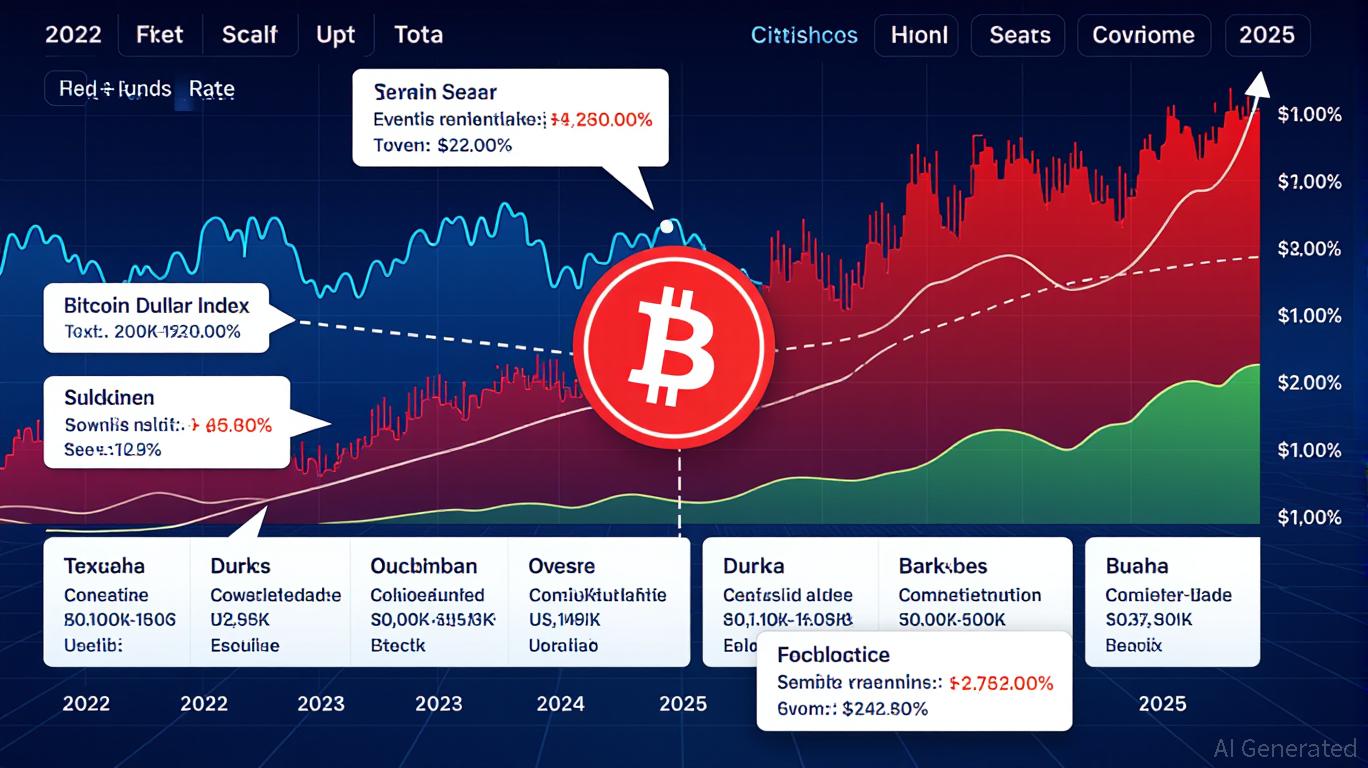The recent swings in Bitcoin's value have drawn significant attention from both investors and regulators, as the cryptocurrency experienced a nearly 2% drop in late 2025. This decline, driven by a mix of global economic pressures and changing investor attitudes, has reduced Bitcoin’s market cap from over $2.4 trillion to $1.7 trillion. The situation highlights how responsive Bitcoin is to worldwide economic trends and regulatory changes. For those with a strategic outlook, grasping how these elements interact is essential for managing the crypto market’s volatility and spotting emerging opportunities.
Macroeconomic Signals: Central Banks and Risk Appetite
Central
bank
policies continue to play a major role in determining Bitcoin’s direction. The U.S. Federal Reserve’s measured stance—
lowering its main interest rate by 0.25%
to 4.00% while expressing caution about further reductions—has contributed to market instability. As investors brace for tighter monetary policy,
many have redirected funds into lower-risk assets
, intensifying Bitcoin’s losses as bond yields climb and the dollar strengthens. This pattern is further complicated by ongoing global trade disputes, especially the rise in tariffs on Chinese technology exports,
which have reduced risk tolerance
and put additional downward pressure on digital currencies.
The inflated valuations in the artificial intelligence industry have also curbed enthusiasm for riskier assets like
Bitcoin
,
as investors favor what they see as safer technology stocks
. At the same time,
leveraged crypto positions have come under pressure to liquidate
, speeding up Bitcoin’s fall below significant psychological thresholds such as $80,300. These factors illustrate that Bitcoin now serves more as an indicator of economic uncertainty than as a straightforward hedge against inflation.
Investor Psychology: Fear, Herd Behavior, and Sentiment
Bitcoin’s price swings are influenced not just by macroeconomic trends but also by investor psychology.
The CoinMarketCap Fear & Greed Index is stuck in the "extreme fear" category
at 12, signaling deep pessimism. This mood is intensified by herd mentality, where market participants mimic others’ actions rather than making independent judgments. When prices surge, speculative mania pushes money into high-risk assets like NFTs, but during downturns, panic selling and risk aversion take over
as research shows
.
Financial knowledge also shapes how investors respond.
Research indicates
that those with greater financial literacy are more likely to treat Bitcoin as a long-term diversification option during turbulent times, while those less informed tend to react emotionally to short-term price changes. This contrast highlights the value of education and a disciplined approach to avoid rash decisions.
Policy Responses: Regulatory Clarity and Strategic Innovation
Regulatory moves in late 2025 have brought both obstacles and new possibilities.
The U.S. SEC has authorized generic listing rules
for commodity-based trust shares, making it easier to launch spot crypto ETFs and showing cautious openness to innovation. At the same time,
the administration’s latest executive order
on digital finance—which encourages public blockchain use and dollar-backed stablecoins but rejects a U.S. CBDC—has created a more supportive regulatory backdrop.
Still, regulatory ambiguity remains.
The SEC’s Spring 2025 Regulatory Agenda
features plans to update rules on custody and trading, which could alter how markets function. For investors, this changing environment requires close attention, as clearer policies could attract institutional money, while ongoing uncertainty may prompt further withdrawals.
Strategic Positioning: Navigating the Volatility
To succeed in this macro-driven landscape, investors need a well-rounded strategy. First,
tracking technical markers—like Bitcoin’s crucial $80,300 support
can help spot possible market reversals. Second, managing exposure to economic risks by spreading investments across different assets, including gold
which has, in some regions, surpassed Bitcoin as a preferred safe haven
, can help cushion losses.
Third, applying insights from behavioral finance can improve investment choices. For example,
taking a contrarian approach during periods of intense fear
—when panic selling pushes prices to extreme lows—may reveal buying opportunities. Additionally, institutional players should focus on ETFs and stablecoins,
which provide both liquidity and regulatory compliance
.
Conclusion
The turbulence in Bitcoin’s price during late 2025 is the result of a complex mix of economic signals, investor behavior, and regulatory changes. Despite the prevailing bearish mood, there are still chances for savvy investors to position themselves advantageously. Those who blend macroeconomic insight with disciplined, informed strategies—and who stay alert to regulatory developments—can weather the volatility and tap into Bitcoin’s long-term promise. As the market evolves, lasting success will depend more on building resilience and managing cycles than on chasing quick profits.
